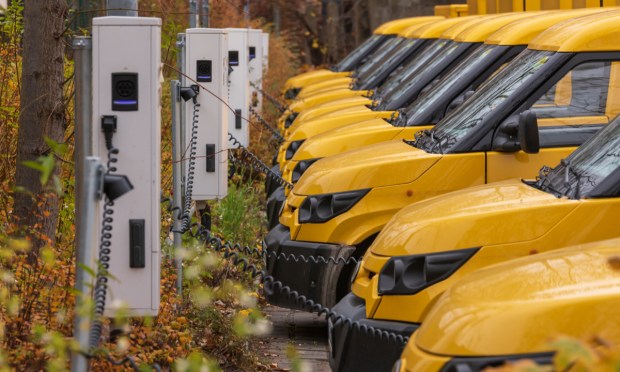It’s the EV Century, Not AI Era, for Industrial Economy

While generative artificial intelligence (AI) captures the world’s imagination, there’s another transformative phase shift happening.
It is the transition to electric vehicles (EVs).
The EV transition represents an revolution focused not just on technological innovation, but one also centered around hardware transformation and productivity capture — as well as planet decarbonization.
And while first wave of transition is focused on the light-vehicle automotive industry, the possibilities that the EV transition will hold for the industrial economy, particularly the medium- and heavy-freight and logistics sector, are impossible to understate.
That’s because, above all, the EV shift opens up the doors to a connected ecosystem where intelligent hardware will offer commercial players the capacity for enhanced customer experiences, increased efficiency and accessibility, and real-time agility around the way their daily tasks and workflows are managed.
All of which will serve to better connect and streamline both global and domestic commerce.
And at the center of everything powering the first wave of the EV revolution for the industrial economy, right next to its lithium-ion batteries, sit payments.
Read also: Industrial Economy’s Recent Advances Were Built on Ancient History
Implications of Tech Start With Payments
“Sixty percent to 70% of an EV is the same as your regular ICE (internal combustion engine) make. The wheels, tires, body are pretty much similar. But the 30% to 35% that is different is completely state of the art, and that requires a futuristic way of thinking,” Arun Chickmenahalli, Ryder System’s director of maintenance R&D for advanced vehicle technology, told PYMNTS.
That futuristic way of thinking involves integrated ecosystems that organize hardware devices into digital front doors. As PYMNTS CEO Karen Webster wrote Sept. 18, digital transformation is about the physical world becoming an extension of the digital world, not a bolt-on or a separate channel that is the stutter step to the analog processes that define business today.
The intersection of ongoing innovations in connected devices — particularly the emerging generation of automobiles — software advances, digital payments, and cellular broadband technology, have made it possible for businesses to connect and transact with each other safely, securely, and in real time.
As Chickmenahalli explained to PYMNTS, his firm is working on building out commercial EV fleets that, when an EV is brought in for maintenance and parts are replaced under warranty, the entire process can happen seamlessly and digitally without any need for physically filling paperwork.
And the car-as-wallet concept has been gaining traction, progressing in-step with the idea of the holistically connected vehicle.
As announced last year, Stripe Connect will enable Ford to facilitate and route a customer’s payments to dealerships, while Mercedes drivers in Germany can now make digital payments directly from their car using biometric authentication, and Hyundai earlier this month (Sept. 7) debuted “Hyundai Pay,” which will allow U.S. drivers to “find and pay for things with their vehicle’s touchscreen using securely stored credit card information.”
Elsewhere, EVgo has partnered with Amazon to introduce an Alexa-enabled EV charging experience where drivers can locate and navigate to nearby charging stations using voice commands, in another example of connected vehicles acting as a green light to commercial occasions.
Read also: Legacy Firms Prep for Digital Buyers Who Don’t Want to Talk to Procurement
Laying Down the Runway
But the unavoidable fact remains that for the EV transition to completely displace ICE fleets there needs to be a lot more work done on the EV infrastructure side for medium- and heavy-duty trucking segments to be able to operate effectively across the country. However, already there are behavioral changes and expectation shifts working their way through the commercial logistics segment.
“These new tech innovations [being brought to market within the industry] are meant to organize an entire relationship that was previously unorganized, and where efficiencies slipped through the gaps,” Fernando Correa, CEO and co-founder of international digital trade company Cargobot, told PYMNTS in April.
And the rapid advance of today’s technical innovations will create new use cases for a connected ecosystem anchored by connected commercial vehicles.
That’s because technology doesn’t evolve in a vacuum, and a rising tide of innovation lifts all boats (or, trucks).
Already Uber Freight and Waabi have partnered to accelerate the deployment of autonomous trucks for the logistics sector, while inroads are being made in voice AI that promise to create next generation driver-vehicle interactions that can further automate and streamline the entire commercial transport occasion.

